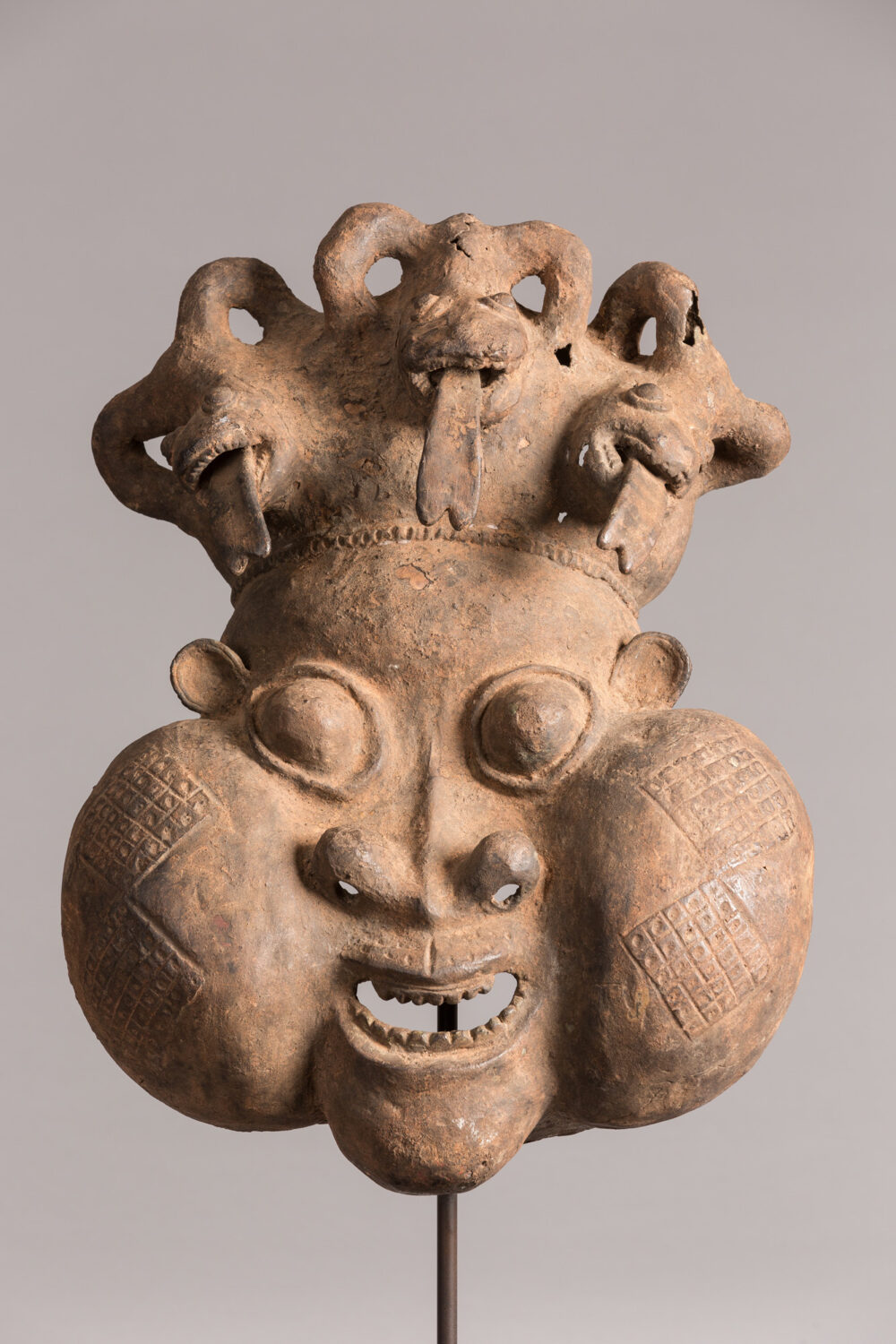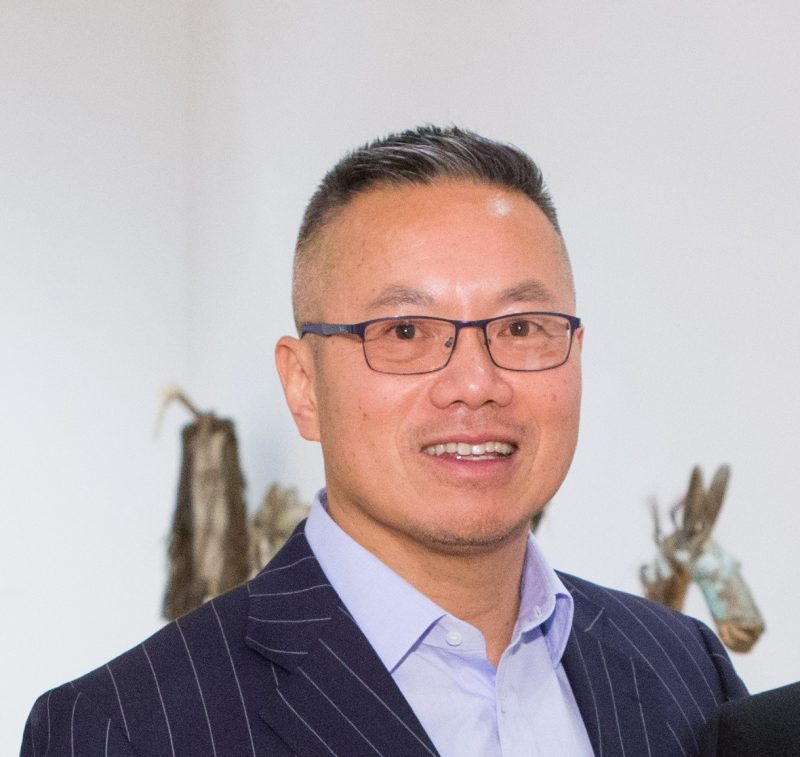The Liren Wei Collection depicts a broad and exciting vision of traditional art in Africa. Presented in this exhibition are objects from areas as geographically diverse as the West African savanna and the forests of the Congo Basin.
This geographic diversity is enriched by the range of materials from which sculptures were made. These include wood, metals, stone, ivory, leather, horns, beads, shells, terracotta, cloth, feathers, quills, fibers, leaves, roots, and other materials. Some such as the Bamana Komo and Kono masks are covered with sacrificial accretions. These ancient masks stand in sharp contrast to the more contemporary and exuberant poly-chromed Bozo puppets. Painted with modern oil paints, their size, and complexity carry forth a long tradition of the display importance of these sculptures. Depicting stylized bovines, antelopes, crocodiles, and people, such puppets by their very physical forms convey very clear social messages to audiences during public performances. These sculptures derive from an ancient tradition. Yet, they also exhibit changes that represent important modifications of older paradigms. By contrast, the Kono and Komo masks reflect an almost immutability of form. Their forms are less open to change because, unlike the Bozo puppets, these masks are central to the rituals of secret initiation societies for men. From one perspective, these masks have a religious purpose while the puppets have a secular one.


